No doubt many readers witnessed the latest full moon this week. The April moon is also known as Pink Moon, after the pink flowers that bloom in spring. The moon, of course, affects the tides and this week saw such high tides that the Thames Barrier closed for the 199th time to protect London from flooding.
Diversions will be in place from tomorrow (May 1) as you walk between Clifton Hampden and Dorchester. This is to allow Earth Trust to complete their River of Life II project where wetlands are being created to provide a habitat for wildlife. You can read more about the project here.
In one of the most unusual stories we have reported, a man has been arrested for chopping down more than 50 trees along the Thames between Weybridge and Walton. Apparently the man would go out at night to commit these acts, which had been going on for some time. Quite what motivated him to perform such an act of vandalism, we may never know.
If walking through Bushy Park (which you might do if following our suggested detour), you need to be aware that dogs MUST be on leads from May 4 to August 2, coinciding with the deer birthing season where around 300 deer are expected to be born. The same restrictions apply to Richmond Park.
If you’ve walked on the Thames Path through Reading just before Caversham Lock, you may have noticed quite some construction work being undertaken by the weir. This is the Reading Hydro, a community -based scheme designed to create a renewable source of energy in Reading. This week, two Archimedes screw turbines were delivered which will generate 320 Megawatt hours per year.
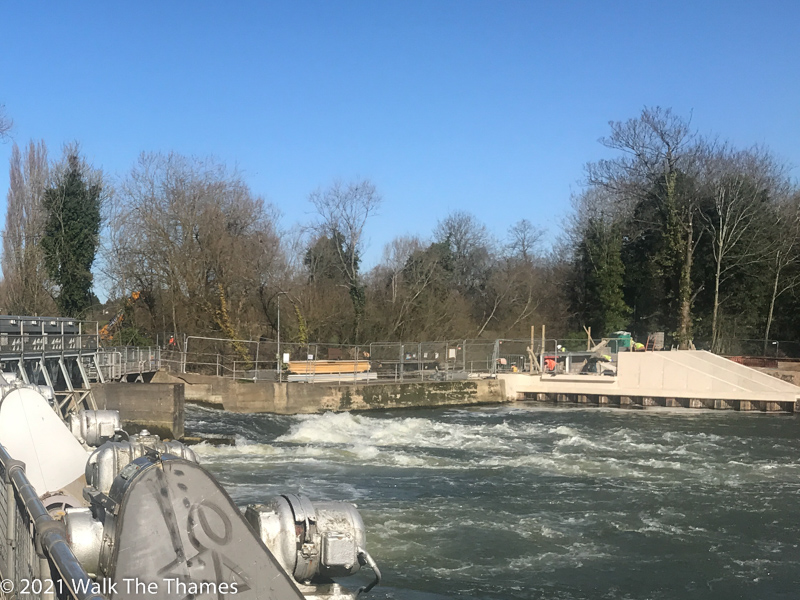
The Orchestra of St John’s is hosting two concerts at Dorchester Abbey. On May 22, they will perform Wagner’s Siegfried Idyll and other works. Then on June 5 the Oxford Voices will perform a choral arrangement of Vaughan Williams’ Lark Ascending featuring the violinist Jan Schmolk. Further details here.
If walking through Reading on June 19, you might like to drop by at Waterfest, a free town centre-based community event where Reading Abbey’s history will be brought to life. The Abbey is celebrating its 900th anniversary this year.
Staying in Reading, the Berkshire Family History Society is hosting a talk on “Jane Austen’s schooldays in Reading”. Austen spent two years at the Ladies Boarding School within Reading’s Abbey Gateway. This will be on May 8 at 3pm. Tickets cost £5.
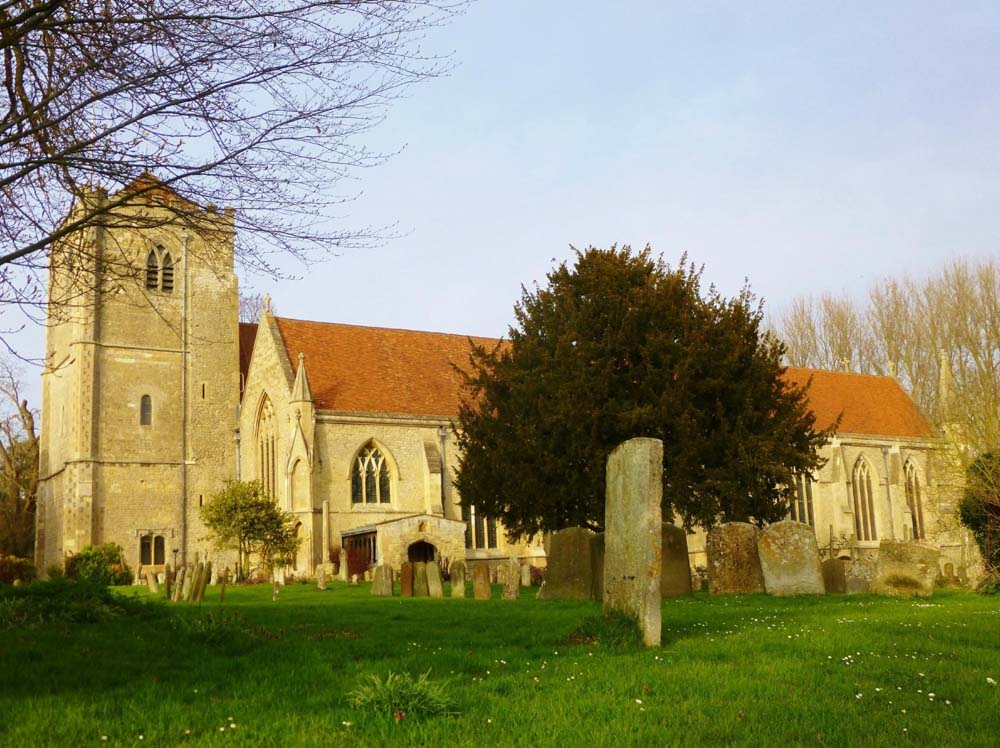
A new riverside bar is opening this weekend. The Medley is a few yards from Rainbow Bridge at Binsey, not far from The Perch. A converted caravan serves as the bar with socially-distanced outside seating by the river.
We previously reported on the demise of the Devenport House hotel in Greenwich, whose license has been sold. We still don’t know what is to become of the building. In the meantime we have replaced it with the Admiral Hardy, another “silver” hotel and close to the Cutty Sark.
Staying in the Greenwich area but closer to the Thames Barrier we have added The Pilot. This pub, owned by Fullers, has 10 rooms and is just past the O2 Arena at Greenwich Peninsula. It’s only 1.4. miles back along the Thames Path from the Thames Barrier. It is classified as Gold.
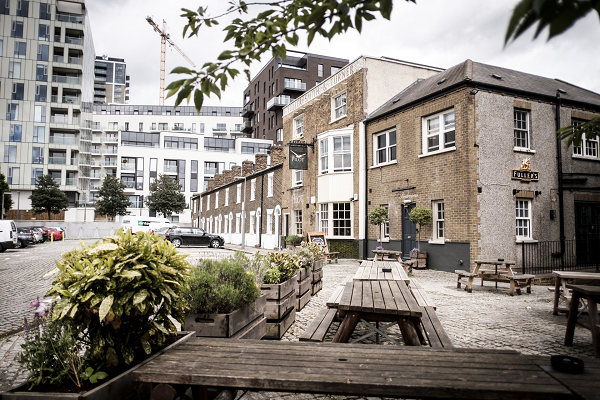
If on the Thames Path look out for the yellow wagtail. These marvellous birds can be seen darting about the river. We spotted them near Dorchester and there have been sightings at Cholsey Marsh. As they winter in West Africa they have come a long way!
Apologies if we’ve repeated this but a campaign has been recently launched to place “seal hotspot” signs. These would be informational notices about the seals as well as explaining the dangers of getting too close. They have been known to bite; and, as their mouths contain harmful bacteria, this can be dangerous. It is estimated there are approximately 3,500 seals in the Thames estuary and seals have been spotted as high up the river as Teddington.
The beautiful Marble Hill House, which can be seen from the left bank of Thames Path as you walk between Twickenham and Richmond Bridge has had its scaffolding removed following extensive works including repainting, new windows and roof repairs. Marble Hill House was constructed between 1724 and 1729 for Henrietta Howard, the mistress of George II. It was rented by the Prince Regent, later to become George IV, to house his mistress, Maria Fitzherbert.
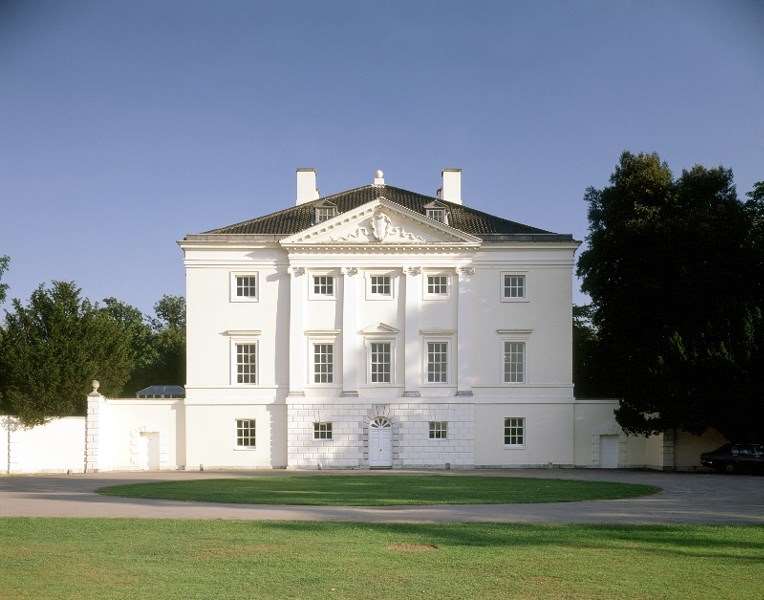
Our random wanderings on the Thames Path this week took us to Chertsey, a pleasant town but note that the town is just over a mile from the river. So we are really starting at Chertsey Bridge, one of the most photographed on the Thames. Completed in 1785 it is made of stone and comprises seven arches. There are two pubs here: the Bridge, which also offers rooms, and the Kingfisher.
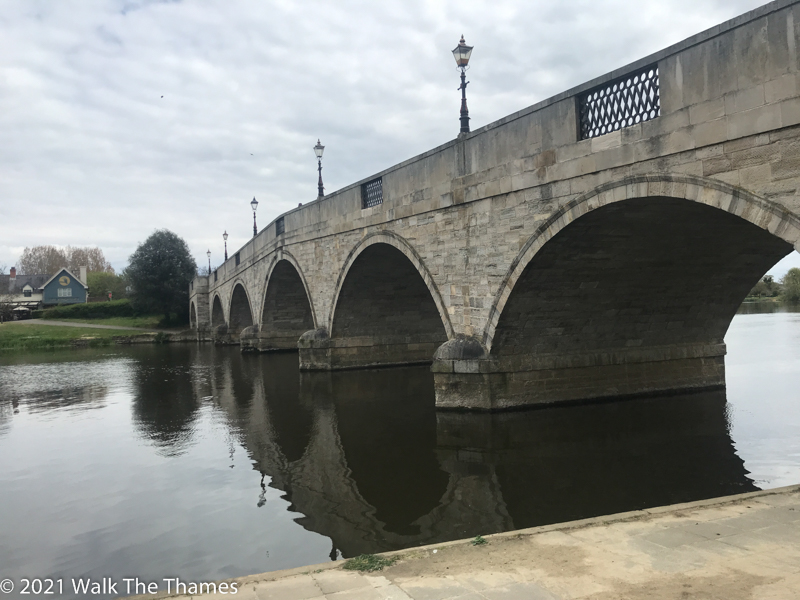
The Path continues on the left bank of the river through Dumsey Meadows where there is plenty of birdlife: kingfishers, swallows, grebes, wagtails, moorhens, and herons. This is the last meadow you walk through if heading downstream. From here on, it’s gravel tracks and tarmac.
Past the meadow, houseboats line the river. These are permanent moorings with all mod cons, unlike the lived-in barges and narrowboats that you see upstream.
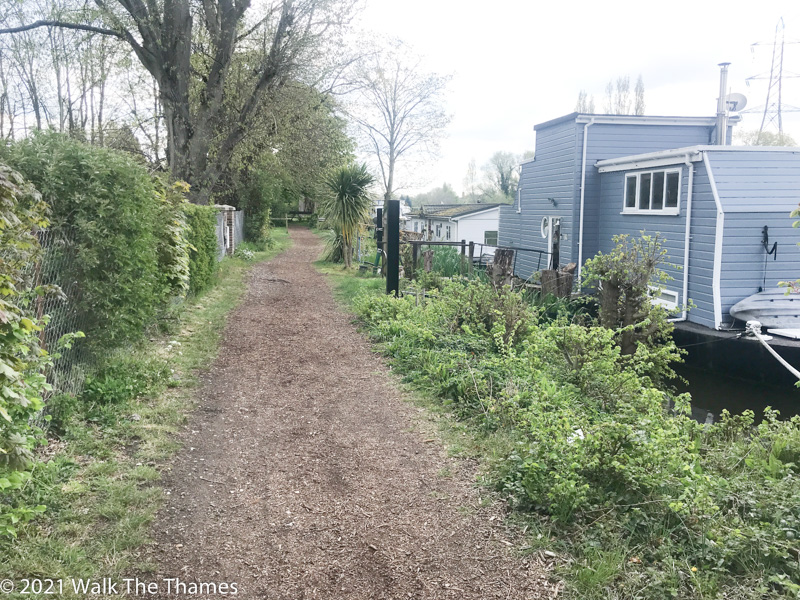
The Path is joined by Dockett Eddy Lane, a quiet road providing access to picturesque riverside homes. It’s a tranquil spot and hard to believe that we are inside the M25 and just 5 miles due south of Heathrow airport.
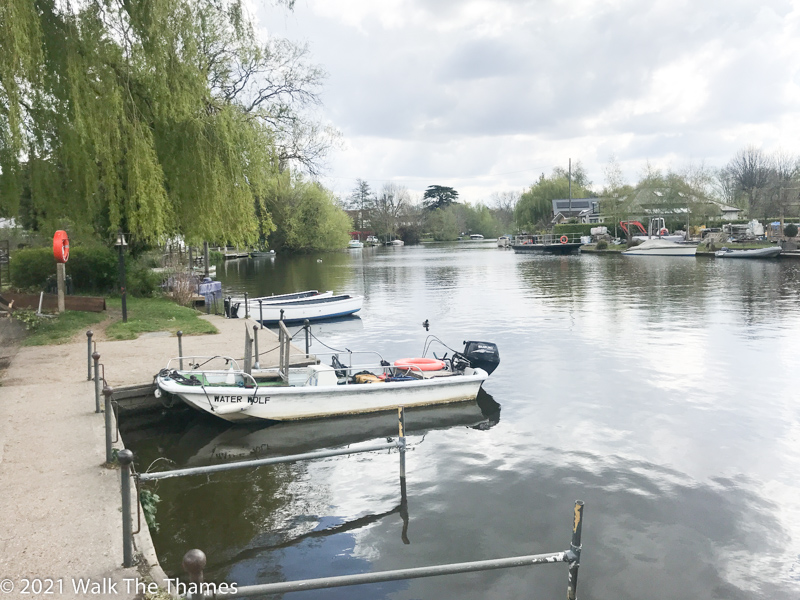
Just past the Thames Court Inn, the river meanders to the south around Hamhaugh Island before returning at the ferry. A weir, and more immediately Shepperton lock, provide short cuts which the Thames Path follows. It’s possible to cross at the lock onto the island although you’ll have to return the same way.
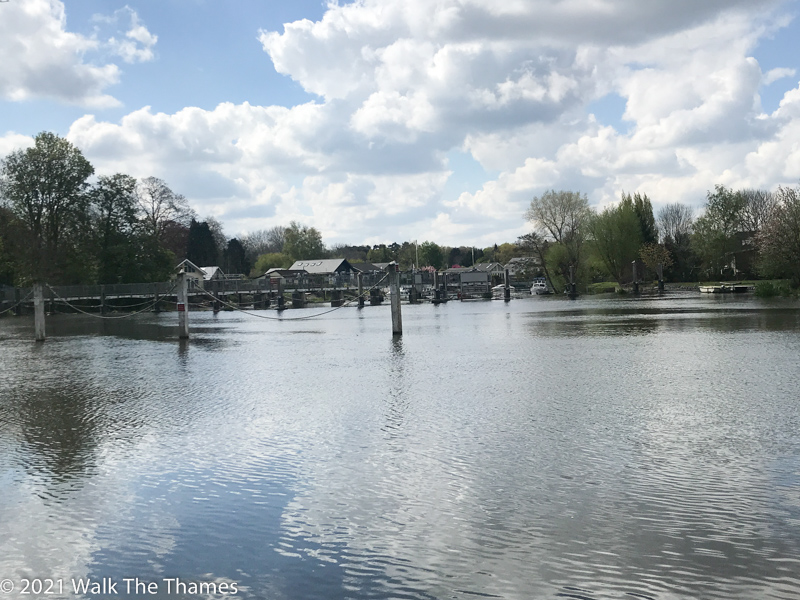
Past the lock is the Shepperton to Weybridge ferry. The tow path crosses here so you need to take this. The ferry departs every 15 minutes but you must summon the skipper using the bell. It’s a quaint ritual. The fee is £2.50 for a 2 minute crossing. There’s also an attractive cafe at the ferry, better than the one at the lock which is currently closed.
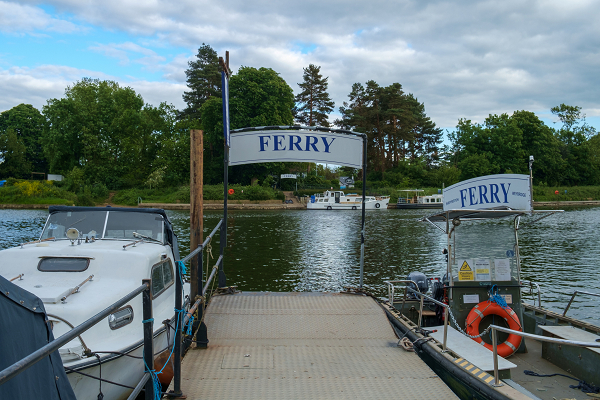
On disembarking you will see a riverside footpath directing you to Weybridge. This town, one of the most affluent in England, is about a mile away on the banks of the River Wey. Accommodation can be secured at the Ship Inn. The Thames Path heads east past D’Oyly Carte Island.
The island was purchased in 1875 by Richard D’Oyly Carte, the producer of Gilbert and Sullivan operas and founder of the Savoy Theatre in London. D’Oyly Carte had intended to use it as an annex of the Savoy but he was unable to obtain a drinks license. He lived there with a pet crocodile.
The current house, known as Eyot House, is somewhat derelict but could be quite magnificent. We understand it was recently purchased so hopefully it will soon be restored to its former glory.
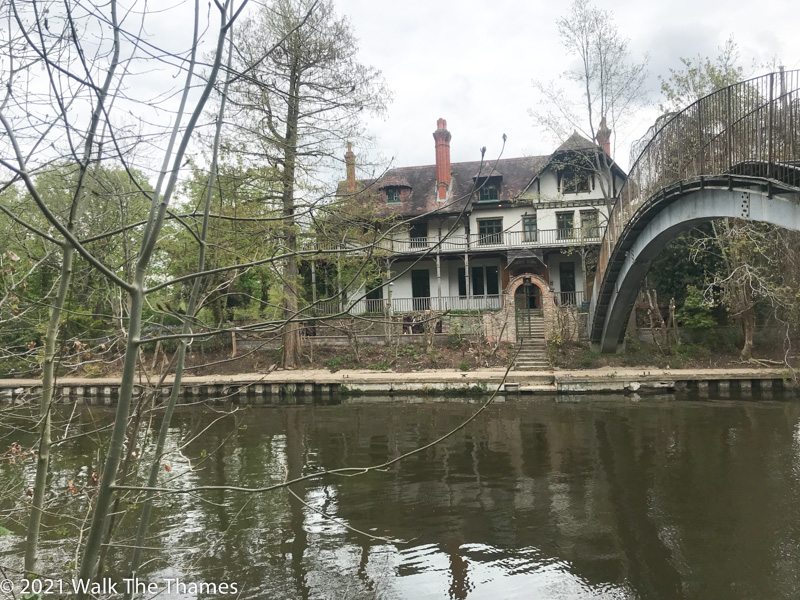
Past the island, the Thames meanders to the north to the outskirts of Shepperton. An east-west cut (Desborough Cut) has been built which, of course, the Thames Path follows. The cut is about 0.6 miles long. The river is about 1.5 miles. So, from a navigational perspective, this made a lot of sense. The towpath runs parallel to Walton Lane. Although mostly hidden by trees, you will be aware of its presence from the constant sound of traffic.
You pass under two bridges close to either end of the cut. You have no reason to cross them as they both lead on to Desborough Island – from which there is no escape!
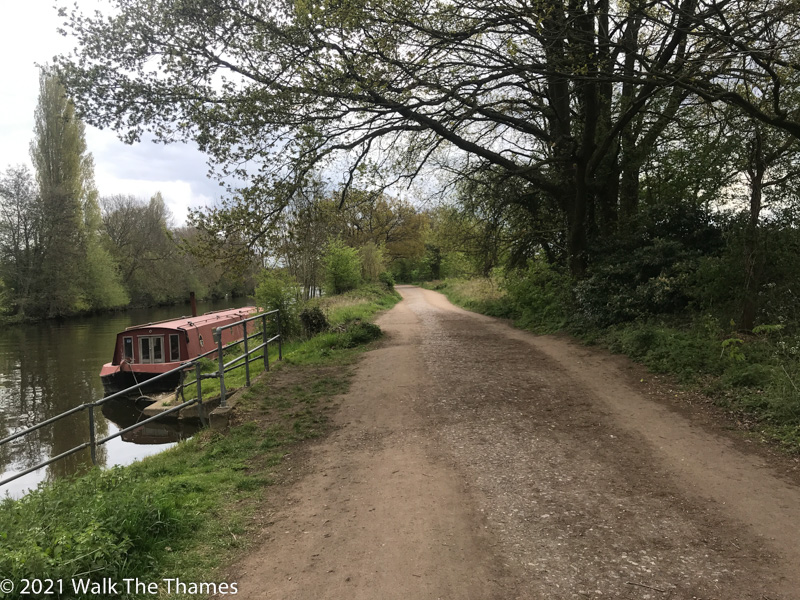
Soon after the reunion with the Thames, Walton Bridge comes into view. This is one of the youngest bridges on the Thames having been built in 2013. It is the sixth in a long succession of bridges, the first having been completed in 1750 and painted by Canaletto. Turner painted its replacement. At a cost of £32 million, the present bridge is rather graceful from a distance.
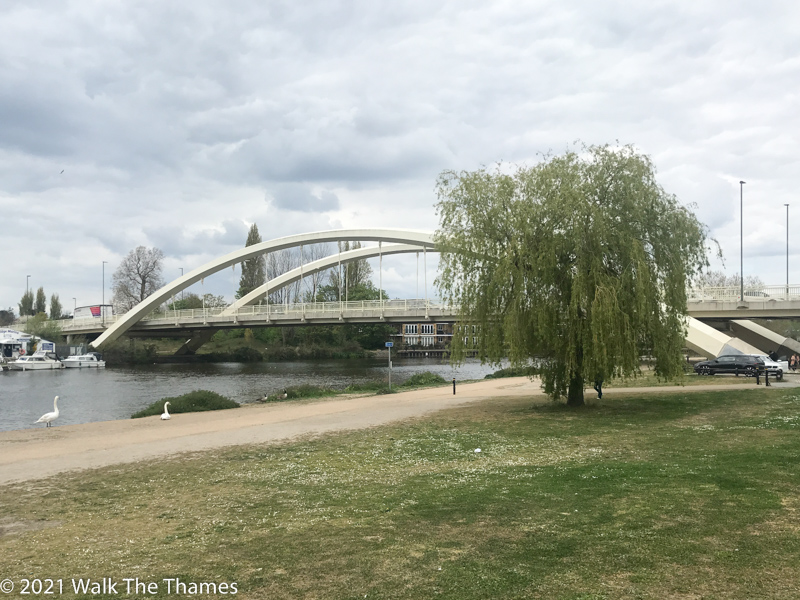
Walton is not particularly attractive and, in any case, the town centre lies some distance from the river. So, unless you have a dire need to eat at Carluccio’s or visit a bank, you might as well press on. If you are hungry there is an outdoor cafe by the bridge. And the Anglers riverside pub is less than half a mile away.
Rewinding to the ferry crossing: the Thames Path offers an alternative route through Shepperton and, having not walked this before, we gave it a go. From the ferry crossing you walk up (north) Ferry Lane, a pleasant quiet road apart from two Rottweilers lurking behind a gate on the left. After a third of a mile you turn right (east) onto Chertsey Road which leads past what I can only assume is “old” Shepperton. The Anchor and Warren Lodge hotels (both listed on our route planner) sit facing each other across Church Square with St Nicholas’ Church looking on. Ferry Square, just next door, adjoins the natural Thames.
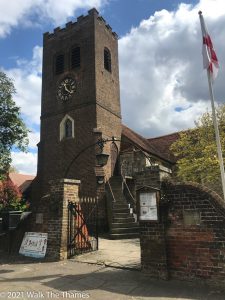
If there was a river path from Ferry Square onwards, this alternative route would be quite attractive. Unfortunately there isn’t and the Path mostly follows Chertsey Road which becomes quite busy and narrow as you pass by the Red Lion, just where the Thames reaches the most northerly point of its meander.
The journey back south to Walton is a little better: through a park and then along a quiet Walton Lane to the bridge. To be fair, it’s not a bad walk. The roads it follows, apart from the section by the Red Lion, are fairly quiet. But, unless you were taking accommodation at Shepperton, or the ferry was not working (which has been known in bad weather), there is no reason to take this alternative route which, by the way, is 0.6 miles longer. Unless you wanted to save £2.50?
Ready to book?
| Cookie | Duration | Description |
|---|---|---|
| cookielawinfo-checkbox-analytics | 11 months | This cookie is set by GDPR Cookie Consent plugin. The cookie is used to store the user consent for the cookies in the category "Analytics". |
| cookielawinfo-checkbox-functional | 11 months | The cookie is set by GDPR cookie consent to record the user consent for the cookies in the category "Functional". |
| cookielawinfo-checkbox-necessary | 11 months | This cookie is set by GDPR Cookie Consent plugin. The cookies is used to store the user consent for the cookies in the category "Necessary". |
| cookielawinfo-checkbox-others | 11 months | This cookie is set by GDPR Cookie Consent plugin. The cookie is used to store the user consent for the cookies in the category "Other. |
| cookielawinfo-checkbox-performance | 11 months | This cookie is set by GDPR Cookie Consent plugin. The cookie is used to store the user consent for the cookies in the category "Performance". |
| viewed_cookie_policy | 11 months | The cookie is set by the GDPR Cookie Consent plugin and is used to store whether or not user has consented to the use of cookies. It does not store any personal data. |